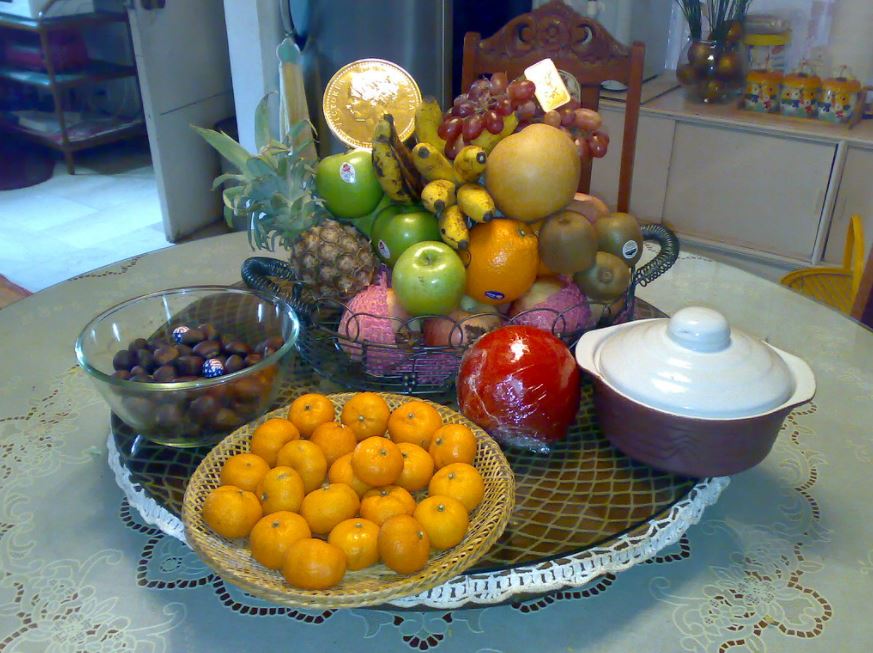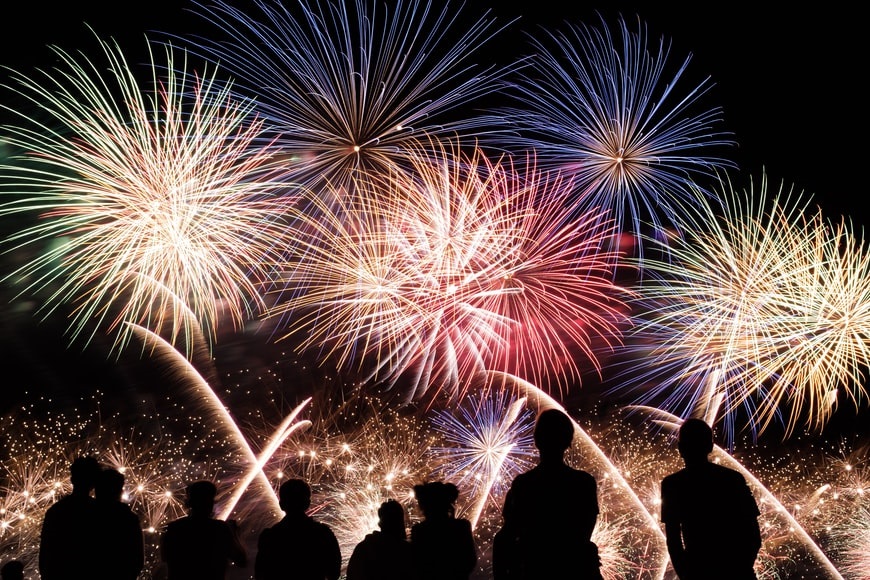Written by: Maine Dela Cruz
The Christmas season has finally passed. So, it’s safe to say that we’re all ready to celebrate the start of a new year. Civilizations around the world have been celebrating the start of each new year for at least four millennia. Today, most New Year’s festivities begin on December 31 (New Year’s Eve), the last day of the Gregorian calendar, and continue into the early hours of January 1 (New Year’s Day). Common traditions include attending parties, eating special New Year’s foods, making resolutions for the new year, and watching fireworks displays.
Before you connect to fiber internet and stream your favorite party music, let’s answer why we ended up celebrating New Year’s Day on January 1 and the fun ways of celebrating it.

You can also check out these related articles:
Ancient New Year’s Celebrations
The earliest recorded festivities in honor of a new year’s arrival date back some 4,000 years to ancient Babylon. For the Babylonians, the first new moon following the vernal equinox—the day in late March with an equal amount of sunlight and darkness—heralded the start of a new year. They marked the occasion with a massive religious festival called Akitu (derived from the Sumerian word for barley, which was cut in the spring) that involved a different ritual on each of its 11 days. In addition to the new year, Atiku celebrated the mythical victory of the Babylonian sky god Marduk over the evil sea goddess Tiamat and served an important political purpose: It was during this time that a new king was crowned or that the current ruler’s divine mandate was symbolically renewed.
Why January 1 Starts the New Year

The early Roman calendar consisted of 10 months and 304 days, with each new year beginning at the vernal equinox; according to tradition, it was created by Romulus, the founder of Rome, in the eighth century B.C. A later king, Numa Pompilius, is credited with adding the months of Januarius and Februarius.
The Julian calendar
Over the centuries, the calendar fell out of sync with the sun, and in 46 B.C. the emperor Julius Caesar decided to solve the problem by consulting with the most prominent astronomers and mathematicians of his time. He introduced the Julian calendar, which closely resembles the more modern Gregorian calendar that most countries around the world use today.
As part of his reform, Caesar instituted January 1 as the first day of the year, partly to honor the month’s namesake: Janus, the Roman god of beginnings, whose two faces allowed him to look back into the past and forward into the future. Romans celebrated by offering sacrifices to Janus, exchanging gifts with one another, decorating their homes with laurel branches, and attending raucous parties.
The Gregorian Calendar
In medieval Europe, Christian leaders temporarily replaced January 1 as the first of the year with days carrying more religious significance, such as December 25 (the anniversary of Jesus’ birth) and March 25 (the Feast of the Annunciation); Pope Gregory XIII reestablished January 1 as New Year’s Day in 1582.
Varying New Year dates
Not all civilizations in contemporary times adhere to the Gregorian calendar. The Hindu, Chinese, Coptic, Jewish, and Islamic calendars all have different dates for the New Year.
The Chinese New Year, for example, begins in January or early February. Continue reading to learn more about Chinese New Year. Rosh Hashanah is the name given to the Jewish New Year, which is based on the lunar calendar and occurs in September. The Islamic New Year, also known as Muharram 1, is often marked in July or August and is determined by the sighting of the thin crescent Moon.
Throughout antiquity, civilizations around the world developed increasingly sophisticated calendars, typically pinning the first day of the year to an agricultural or astronomical event. In Egypt, for instance, the year began with the annual flooding of the Nile, which coincided with the rising of the star Sirius. The first day of the Chinese new year, meanwhile, occurred with the second new moon after the winter solstice.
New Year’s Day Traditions Around the World

New Year celebrations vary from one country to another. Here’s a list of different New Year’s Day customs around the world.
1. First foot decides your fortune
In Scotland, the custom of first-footing is an important part of the celebration of Hogmanay or New Year’s Eve Day. This practice holds that the first foot to cross a threshold after midnight will predict the next year’s fortune.
2. Visiting loved ones during New Year’s eve
Today, there is a custom of visiting good friends and family after midnight or during New Year’s Eve.
3. New Year’s resolution
A common custom on the first of the new year is to take time to reflect on what you have done or failed to do in the previous year and make New Year’s resolutions. Turn your face to the future with a few tips on how to make good New Year’s resolutions.
4. Serving food for good fortune
In Spain and several other Spanish-speaking countries, people bolt down a dozen grapes-symbolizing their hopes for the months ahead-right before midnight. In many parts of the world, traditional New Year’s dishes feature legumes, which are thought to resemble coins and herald future financial success; examples include lentils in Italy and black-eyed peas in the southern United States.
Because pigs represent progress and prosperity in some cultures, pork appears on the New Year’s Eve table in Cuba, Austria, Hungary, Portugal, and other countries. Ring-shaped cakes and pastries, a sign that the year has come full circle, round out the feast in the Netherlands, Mexico, Greece, and elsewhere. In Sweden and Norway, meanwhile, rice pudding with an almond hidden inside is served on New Year’s Eve; it is said that whoever finds the nut can expect 12 months of good fortune.
Champagne and other holiday drink recipes are also served in the New Year celebration.
5. Cold-Water Plunges
It is usual in colder nations near bodies of water, such as Canada, portions of the United States, the United Kingdom, and the Netherlands, to arrange New Year’s cold-water plunges. These plunges and races, which are also referred to as Polar Bear Plunges, often collect money for charity or promote awareness for a particular cause. This custom is so widespread in the United States that many refer to the first day of the year (January 1st) as Polar Plunge Day. The first Polar Bear Plunge occurred on January 1, 1904, in South Boston, Massachusetts, when members of a local swim club jumped into Dorchester Bay. The greatest yearly dive in the United States takes held in Maryland at Sandy Point State Park, which established a record in 2008 by attracting 12,000 plungers to raise money for the Special Olympics.
6. Giving money and postcards
In Japan, adult relatives give money to the children in their families, and many people send postcards to their friends and families, making sure that they arrive on January 1.
7. Gathering at a public place for the New Year countdown
In the United States, the most iconic New Year’s tradition is the dropping of a giant ball in New York City’s Times Square at the stroke of midnight. Millions of people around the world watch the event, which has taken place almost every year since 1907. Over time, the ball itself has ballooned from a 700-pound iron-and-wood orb to a brightly patterned sphere 12 feet in diameter and weighing in at nearly 12,000 pounds. Various towns and cities across America have developed their own versions of the Times Square ritual, organizing public drops of items ranging from pickles (Dillsburg, Pennsylvania) to possums (Tallapoosa, Georgia) at midnight on New Year’s Eve.
Filipino New Year Celebration Ideas

For centuries, Filipinos have practiced various customs to greet the incoming year. Many do it with an expectant heart, cultivating optimism and looking forward to hoped-for prosperity. These traditions have been passed on from one generation to the next; a number of them have been influenced by the Chinese and Spanish. Celebrations for the new year in the Philippines are full of fun and eccentric traditions. It starts off with a war zone-like atmosphere around the nation as people let off huge amounts of fireworks. Here are other Filipino New Year’s Day traditions:
1. Wear polka dots dress
For Filipinos, wearing anything round signifies prosperity. The polka dots epitomize money and fortune.
2. Jumping high when the clock strikes 12
Children are encouraged to jump as high as they can when the clock hits 12 because old folks believe that it will help them grow taller.
3. Media Noche
New year’s celebration for the Filipinos is not complete without the old Filipino custom, Media Noche. During new year’s eve, Filipino families, relatives, and friends gather for a lavish midnight feast that symbolizes their hopes for prosperity and an abundant year ahead. This tradition is most likely inherited from the Spaniards, who colonized the country for more than 300 years.
4. Twelve round fruits
For the centerpiece, Filipino families have 12 round fruits which is a sign of completeness since there are 12 months in one year. For the shape of the fruits, it is believed that round food symbolizes money, and thus can bring you luck in the coming year.
5. Eat sticky rice to strengthen the family bond
Filipinos are known to be family-oriented with very close family ties. They believe that eating food made from sticky rice will bind families together stronger. This is also believed to deliver good fortune. These food include the following:
- bibingka (a type of baked rice cake)
- biko (sweet rice cake)
- and tikoy (also known as nian gao, which is translated as Chinese new year’s cake).
6. Eat pancit (noodles) for long life and fortune
This is another influence from the Chinese. Filipinos believe that eating pancit (long noodles) during the new year will help bring luck and it also represents good health and long life.
7. No chicken and fish dishes
If there is food that is believed to bring luck, there is also something that is considered are not suitable to eat during the new year celebration. A tradition that is still followed by some Filipinos is to abstain from eating chicken and fish, as they symbolize or are associated with food scarcity.
8. Water and rice container should be full
It’s always best to welcome the new year abundantly. So, many Filipinos make sure their water and rice containers are full during the new year celebration. Its because they believe that this will make their life prosperous all year round.
9. Collect coins
Another popular practice especially among children is to fill up one’s pockets with coins and shake the pockets at 12 midnight. This practice is believed to bring good fortune. Some also scatter coins around their houses. They put them at every nook and corner, inside drawers, and on tables. Basically, they’re anywhere they believe will bring them more luck and money.

10. Loud noise to drive away evil spirits
Many Filipinos believe fireworks help ward off evil spirits.
Other Chinese influences include firecrackers and fireworks. The main point is to create loud sounds. This is to scare away evil spirits and elements and also to drive away bad luck.
Apart from pyrotechnics, others create loud noise through other means such as the car horn, torotot (hornpipe), and even frying pans or pots.
11. Open doors, windows and turn on all the lights
Indeed, food and coins that symbolize prosperity. However, another tradition is to open all doors, windows, drawers, and cabinets. This is to bring in good fortune and let the positive vibes in.
With Streamtech, Welcome New Year’s Day with a Bang!

Achieve your new year goals by investing in a fast fiber internet connection. If you’re looking for a great internet provider in the Philippines that doesn’t break the bank, consider Streamtech.
Streamtech is one of the newest internet providers in the Philippines. It offers dedicated fiber internet access, leased line, and WiFi services to subscribers in the franchise areas powered by its own fiber-optic backbone link. Through the Streamtech fiber internet plans, subscribers can rest assured of having a fast and reliable connection, thereby, seamless access to online contents of their needs.
Not only does it offer a fast fiber internet connection, but it also connects you to your favorite television channels. Its partnership with Planet Cable allows you to subscribe to your favorite cable television channels. Also, you can avail of its cable and fiber internet under one plan. Subscribe to Streamtech now, your reliable internet provider in the Philippines!
You may visit the Streamtech Official FB Page to learn more.








